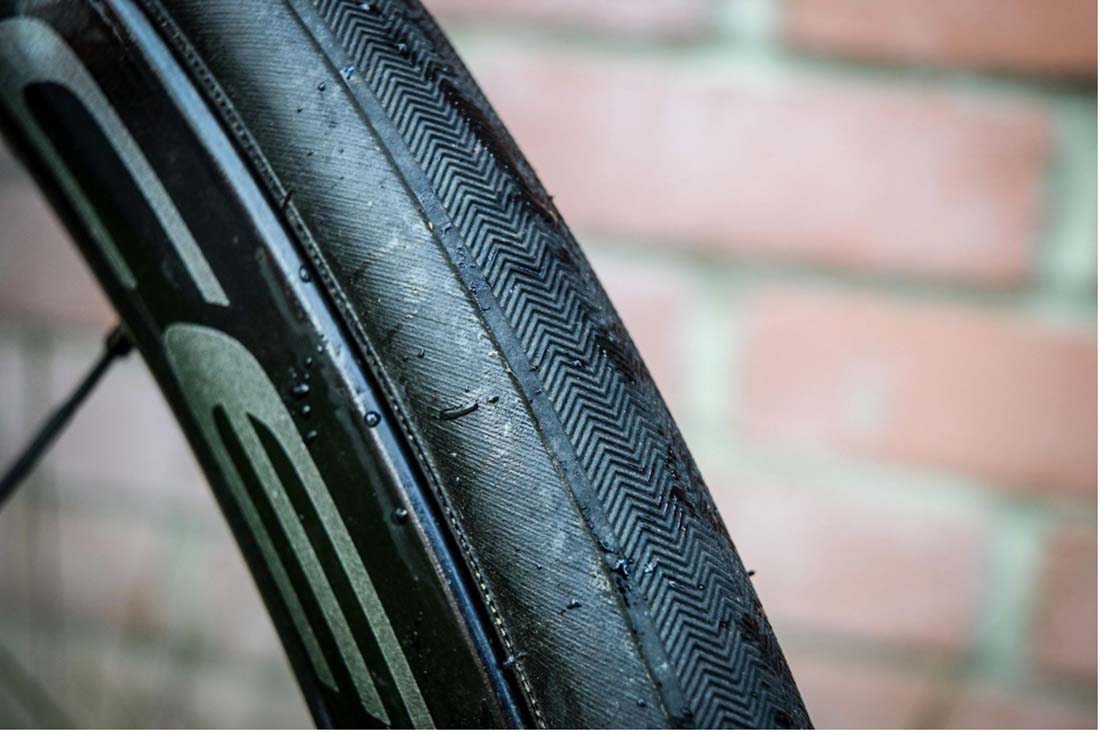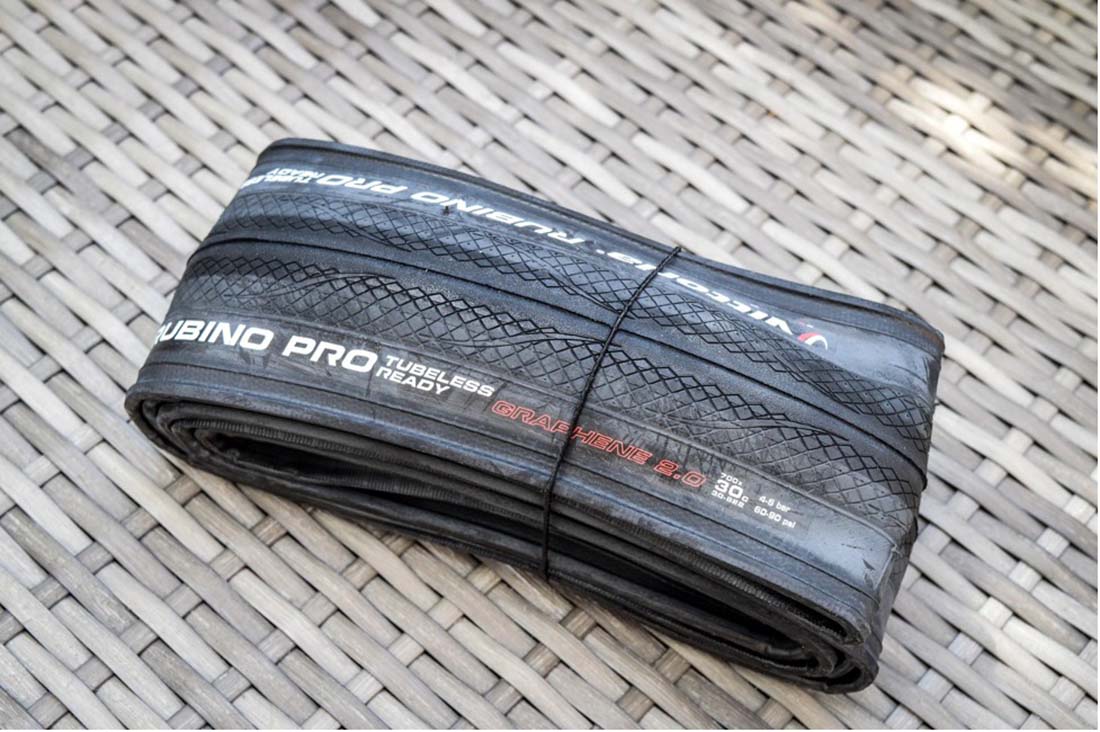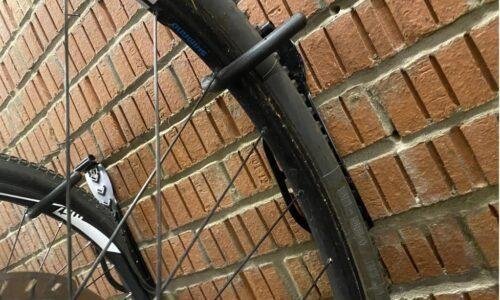If you like riding your bike, enjoy busy club runs, and regularly challenging yourself on big climbs, then you definitely have the cycling bug. However, cycling isn’t always about big miles and smiles.
Sometimes you have those rides where you get double punctures and the weather turns on you, which are much less enjoyable.
Having the right tires can really help you avoid this and make punctures a thing of the past because, let’s be honest, nobody enjoys it when they get a puncture.
A lot of people don’t know that puncture-proof tires have some disadvantages compared to your typical tires, and in this article, we’re going to tell you all about the pros and cons of puncture-proof tires.
Before we start
There are a lot of different tires on the market, so before we start, it’s vital to explain a little bit about the terms manufacturers use to describe a racing and a puncture-proof tire. We will use these terms later when explaining the pros and cons.
TPI
TPI means threads per inch. People think the more threads per inch, the better puncture resistance when it’s actually the opposite. The more threads, the less puncture protection. More threads means finer and thinner threads and actually give the tire less protection but better performing tires.
Fewer threads are larger and surrounded by more rubber compound, making them much better at avoiding punctures.
Rolling Resistance
Rolling resistance is the amount that a tire will naturally slow you down by the resistance of the road. Typically tires with more puncture protection will have a higher rolling resistance and will be less effective and slow you down.
This is very important when it comes to selecting the correct tires for you.
Pros of a Puncture Proof Tire
Fewer Punctures
The most obvious thing you will find with puncture-proof tires is you will get fewer punctures.
They are made with a tough casing which means thorns, flint, and other nasty road critters have much less chance of hitting that inner tube.
Money-Saving
The fewer punctures you get, the less inner tubes you will need to be changing out, and in the long run, this can be quite a saving. Racing tires can see a lot of punctures, and the cost adds up at $5+ a tube.
They last longer
One thing you will find will puncture-protected tires is that they will typically last much longer. This is because the compound is so much tougher.
A tougher compound with a lower TPI rating is just much more hard-wearing, and you can get up to 4000 miles off some good branded tires, which is a great distance.
Cheaper
As mad as it sounds, puncture-proof tires are actually very good value for money and typically come in cheaper than racing tires. This is because the tougher compound for companies is cheaper to produce than the higher TPI racing tires.
Less roadside stops
It’s very annoying having to stop to fix a puncture, and when you get less, you have a lot more time to be riding and enjoying your day out on the bike.
Cons of a Puncture Proof Tire
Slower
Puncture-proof tires typically have a very low TPI and high rolling resistance and are much slower because of this.
With a lower TPI, you get a lot more lag on the road and on a trail, which can be very noticeable.
Heavier
With a lower TPI, you have a heavier rubber compound in a tire, which means the tire’s overall weight is much higher. A heavier tire means it takes more effort to spin, and you will find them harder work.
Tougher to change
If you do end up getting a puncture, it can be more challenging to change the tire on and off the rim. With the tires being thicker, they are a lot less flexible, and some can be very challenging to take them on and off the rim.
What about Tubeless?
Another thing we think is worth mentioning is the advantages of running tubeless tires. These have the performance of a decent racing tire, but instead of having inner tubes inside, they have a liquid that can fix punctures while you are riding.
It doesn’t give you better puncture protection, but typically 80% of punctures fix themselves, and if you need to do a repair, you can use a plug that saves you even taking the wheel off.
Recommended Tires
Of course we need to recommend some tires for you to use. These are our top picks and why we highly recommend them. We have our best city tire, tubeless tire and off road tires for puncture protection.
Best City Tire: WTB Thickslick Comp
The WTB Thickslick Comp is an excellent tire. It has a super low TPI rating and is great for city riding. It’s incredibly grippy in the dry and the wet.
They are super thick and have a great protective casing for the inner tube. You are going to want to be a little careful on the drain covers.
Best Tubeless Tire: Teravail Washburn 700c
The Teravail Washburn 700c is a gravel tire and although not as mainstream as some of the bigger brands is definitely worth knowing about.
It’s tubeless ready, great for keeping your bike puncture free and they look great either with or without tan sidewalls.
Best Off Road Tire: Schwalbe Nobby Nic Super Trail
We are huge fans of Schwalbe tires and the Nobby Nic is an excellent example of a serious grippy dirt tire. It’s fully tubeless ready, great for avoiding punctures with a fairly low TPI rating for an off road tire and is used by many pros.
We highly recommend it.
Conclusion
Puncture-proof tires are excellent, but they do come with some disadvantages compared to a racing tire, and when riding, you notice the difference very much.
If you’re not worried about speed though, having a more puncture-proof tire is ideal, and you will see many happy miles that might be slower but much less interrupted.

Robbie Ferri has spent years working in a bike shop, has worked with industry leading brands on product creation, has been a semi pro athlete, and is a fully qualified strength and conditioning coach. He has broken World Records, bikepacked all over the World and raced ultra distance at a top-level.









